#wetland fish
Text
Uncharismatic Fact of the Day
Calling the Anableps fishes “four-eyes” isn’t an insult-- these species actually have four eyes! Individuals have two eyeballs, and each eyeball has two pupils and two corneas. This allows the Anableps fishes to see above and below the water at the same time, and spot potential prey and predators twice as easily.
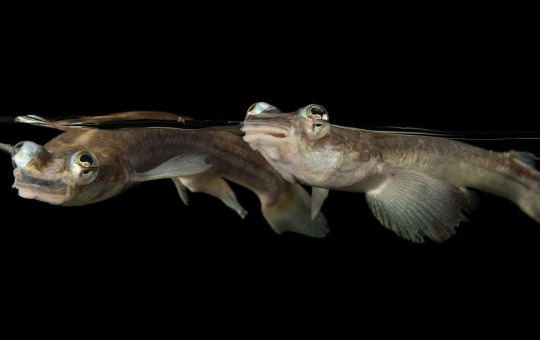
(Image: Largescale foureye fish (Anableps anableps) by Joel Sartore)
#largescale foureye fish#Cyprinodontiformes#Anablepidae#Ray-Finned Fish#Bony fish#fish#freshwater fauna#freshwater fish#wetlands#wetland fish#rivers#river fish#central america#south america#northern south america#Amazon Rainforest
2K notes
·
View notes
Text

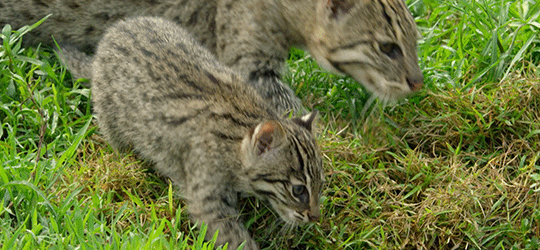




A fishing cat practices hunting with her kittens.
BBC Earth
5K notes
·
View notes
Text


Monocultures of Trident Grass, Lake Okeechobee
#introduced species#up until this point there was fish and animals everywhere#then when we reached this point i saw like 2% of the wildlife i saw elsewhere#photographers on tumblr#nature#lake Okeechobee#florida#wetlands#i believe this is called indian prairie#original photography
5 notes
·
View notes
Note

MUMMICHOG!!!!!!!!!!!
#ask#mhaccunoval#fauna#fish#my wetland class is going to a salt marsh in late march... hope i see this guy
4 notes
·
View notes
Text
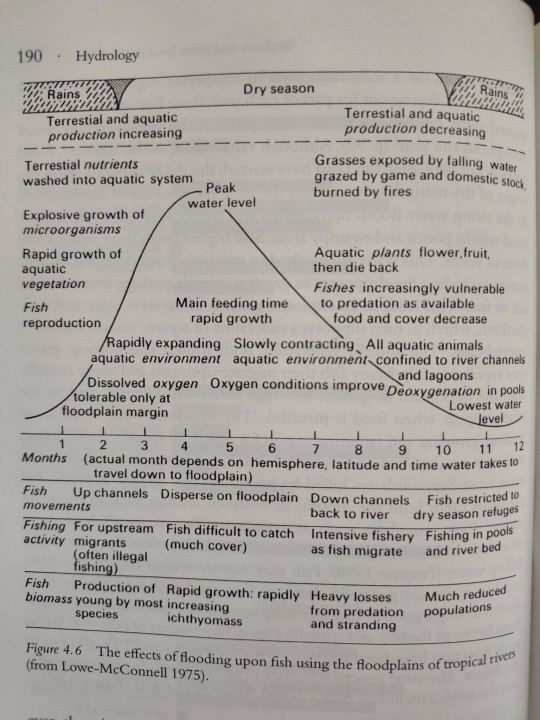
Effects of flooding upon fish using the floodplains of tropical rivers. ISBN 10: 0521783674 Wetland Ecology: Principles and Conservation
2 notes
·
View notes
Text
I remember when they started educating us about oysters and their importance to the bay! They would set up booths at festivals in Baltimore with aquariums full of oysters. It was very cool - I don't remember the year they started but 2014 seems about right.
Maryland has been working with other states on conservation efforts. We have made steps towards protecting the Chesapeake Bay, which is the largest estuary in the United States. The hard work seems to be paying off!
#baltimore#maryland#charm city#the baltimore you don't know#the baltimore you dont know#inner harbor#national aquarium#Chesapeake#chesapeake bay#chesapeake bay foundation#mid atlantic#estuary#wetlands#marshes#brackish#ecology#oysters#fishing#seafood
2 notes
·
View notes
Text
even tho it truly doesn’t make sense for all of phil’s crows to be different species of crow…. i do still like to think there’s somehow fish crows and collared crows and carrion crows and piping crows and house crows and hooded crows and
#i won’t list every type of crow but u can imagine#but the crows r a gift from kristin in my mind#so it makes more sense i’m that context that they’re all different#i just like all kinds of crows#just imagine all the fish crows hanging out around flowerfall 💚💚💚 bc they r more wetland crows 💚💚💚#philza#this isn’t exclusively abt hc phil but also yes it is#philza hardcore#so i’m tagging it. for meself#🐀#me after a week of being quiet: hey guys wanna talk abt crows
19 notes
·
View notes
Text
As the rains arrive on the Houze Prairie, herbivores flock to the region to partake in the seasonal bounty. A herd of ghlanos become uninvited guests to the spectacle of a breeding aggregation of Houze lungfish. Most in the shoal are males, all vying to fertilise the enormous, centenarian female at the centre.
The herd are unsettled by the presence of a young ba'khar, which bears a passing resemblance to their most feared predator, the uktan, but the megaraptoran is content to keep her distance and finish her freshly caught lungfish.

The art is by me, the setting and creatures belong to Keenan Taylor, @tales-of-kaimere.
#tales of kaimere#kaimere#houze prairie#seridic wetlands#houze lungfish#ghlanos#ba'khar#bony fish#chalicotheres#megaraptorans#theropods#dinosaurs#spec evo#speculative fiction#speculative zoology#speculative evolution#speculative biology
8 notes
·
View notes
Text
Wetland Retreat
Wetland retreat
There’s plenty of evidence that this wetland was once filled with trees, such as the stand of decaying snags remaining, but there is new life emerging and wildlife making this quiet space their home – the nest of a prey bird is setup in a prime location to hunt fish to feed its young.
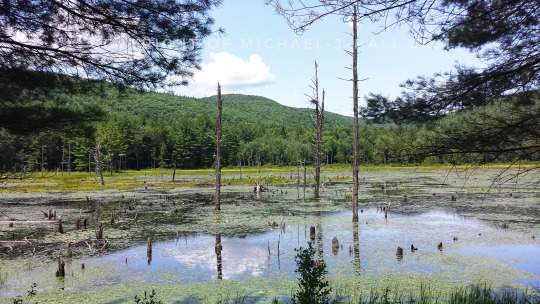
View On WordPress
3 notes
·
View notes
Text
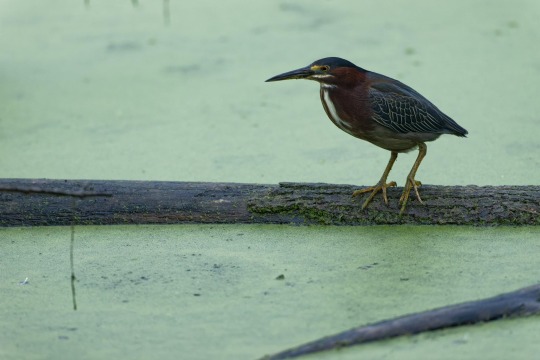


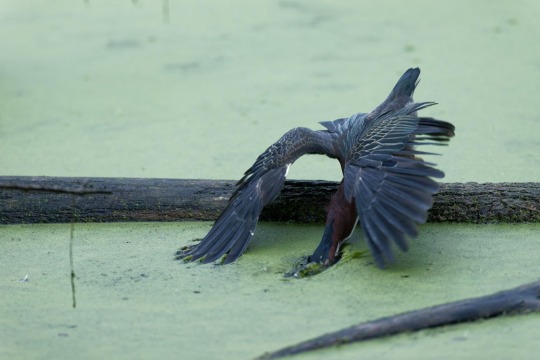


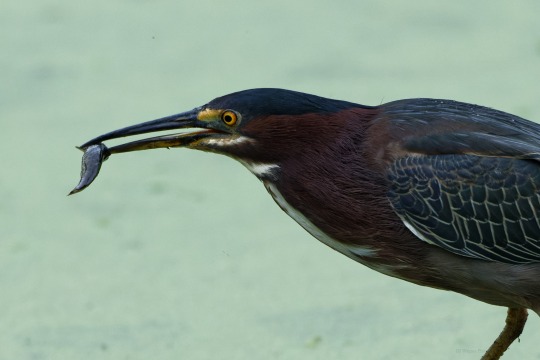
One of my local green herons enjoying some fishing success. Taken 8/23/22.
#nature#canon#outdoors#new york#canon5dmarkiv#wildlife photography#birding#wildlife#birdwatching#upstateny#nys#nywildlife#birds#wetland#swamp#585#animals#fishing
20 notes
·
View notes
Text
The Vanishing Waters: Unveiling the Alarming Rate of Degradation in Our World's Water-Related Ecosystems

Our planet's water-related ecosystems are the lifeblood of biodiversity and play a crucial role in sustaining life on Earth. These diverse habitats, ranging from serene lakes and flowing rivers to vibrant coral reefs and teeming wetlands, provide essential services that are essential for human survival and the well-being of countless species. However, a looming crisis threatens the very existence of these vital ecosystems. The world's water-related ecosystems are being degraded at an alarming rate, putting our environment, wildlife, and even our own future at risk. In this article, we will delve into the causes, consequences, and potential solutions to combat this pressing issue and ensure the survival of these precious ecosystems.
The Magnitude of the Crisis
The degradation of water-related ecosystems is a global challenge that requires immediate attention. Around the world, these habitats are facing a range of threats, including pollution, habitat destruction, overfishing, climate change, and invasive species. These factors, often interconnected, are wreaking havoc on the delicate balance within these ecosystems.
Pollution: A Slow Poison
One of the leading culprits behind the deterioration of water-related ecosystems is pollution. Industrial waste, agricultural runoff, and untreated sewage find their way into our waters, contaminating them with harmful chemicals and plastics. These pollutants not only harm aquatic life but also have far-reaching consequences for humans who rely on these water sources for drinking and agriculture.
Habitat Destruction: Losing Our Natural Havens
The relentless expansion of human activities, including deforestation and urbanization, is rapidly encroaching upon the habitats of various aquatic species. Wetlands are drained, mangroves are cleared, and rivers are diverted, disrupting the natural flow and interconnectedness of these ecosystems. As a result, countless species lose their homes and face the threat of extinction.
Overfishing: Depleting the Ocean's Bounty
Overfishing is pushing marine ecosystems to the brink of collapse. Unregulated and unsustainable fishing practices, coupled with the demand for seafood, are causing a decline in fish populations, disrupting food chains, and jeopardizing the livelihoods of coastal communities that depend on fishing for survival.
Climate Change: The Silent Menace
Perhaps the most insidious threat to water-related ecosystems is climate change. Rising global temperatures lead to the melting of polar ice caps, causing sea levels to rise and intensifying storms and floods. These changes have devastating effects on coastal areas, submerging critical habitats, and causing the loss of biodiversity.
Consequences of Ecosystem Degradation
The degradation of water-related ecosystems has severe consequences for both the environment and human societies. As these ecosystems collapse, they disrupt the services they provide, such as water purification, flood control, and carbon sequestration, impacting human health and economies worldwide.
Biodiversity Loss: A Precarious Chain Reaction
Water-related ecosystems are home to a vast array of species, many of which are uniquely adapted to these environments. As these habitats deteriorate, many species face extinction, triggering a chain reaction that affects the entire ecosystem. The loss of one species can have cascading effects on others, disrupting the delicate web of life.
Threats to Food Security
Fisheries, both marine and freshwater, play a significant role in providing sustenance to billions of people around the globe. The depletion of fish populations due to overfishing and habitat destruction threatens the food security and livelihoods of millions, particularly in developing countries that heavily rely on fish as a primary protein source.
The Impact on Human Health
The quality of our water is directly linked to our health. Polluted water can cause waterborne diseases, affecting millions of people each year. Additionally, the loss of water-related ecosystems reduces the availability of clean water for drinking and sanitation, exacerbating the global water crisis.
Rising Economic Costs
The degradation of water-related ecosystems comes with a hefty price tag. Loss of fisheries, increased frequency of floods, and the decline of coastal protection services result in billions of dollars in economic losses each year. The expenses related to ecosystem restoration and mitigation efforts add further strain on already burdened economies.
Restoring the Balance: A Call to Action
Despite the grim picture painted by the state of our water-related ecosystems, there is hope. By acknowledging the urgency of the situation and taking collective action, we can begin the process of restoring the balance and ensuring the survival of these vital habitats.
Strengthening Environmental Regulations
Governments and policymakers must implement and enforce stringent environmental regulations to control pollution, protect habitats, and promote sustainable fishing practices. Strengthening international cooperation on environmental issues is also essential, as water-related ecosystems transcend national boundaries.
Sustainable Water Management
Water is a finite resource, and sustainable water management is key to ensuring the survival of water-related ecosystems. Implementing efficient irrigation systems, reducing water wastage, and prioritizing the conservation of natural water bodies are vital steps in this direction.
Embracing Renewable Energy
Transitioning to renewable energy sources can significantly mitigate climate change and its impact on water-related ecosystems. Embracing solar, wind, and hydroelectric power can reduce greenhouse gas emissions and limit the rise in global temperatures.
Community Involvement and Education
Engaging local communities in conservation efforts is crucial for the success of any environmental initiative. Raising awareness about the importance of water-related ecosystems and involving communities in restoration projects fosters a sense of ownership and responsibility.
Supporting Conservation Organizations
Supporting organizations like Green Thestral Inc. that are dedicated to environmental conservation can make a significant difference. Contributing to their efforts through donations or volunteer work helps fund critical projects aimed at protecting and restoring water-related ecosystems.
Conclusion
The state of the world's water-related ecosystems demands urgent attention and action from all corners of society. As individuals, communities, and nations, we hold the power to turn the tide and secure the future of these invaluable habitats. By addressing the root causes of degradation, promoting sustainable practices, and supporting conservation initiatives, we can pave the way for a healthier planet and a brighter future for all living beings. Together, let us safeguard the irreplaceable beauty and biodiversity of our water-related ecosystems for generations to come.
What's In It For Me? (WIIFM)
Are you concerned about the future of our planet and the well-being of its inhabitants? The degradation of the world's water-related ecosystems impacts us all. By understanding the urgency of this issue, we can take action to protect these vital habitats, safeguard our environment, and ensure a sustainable future for generations to come. Discover how you can make a difference in preserving the beauty and biodiversity of our precious water ecosystems.
Call to Action (CTA)
Join the movement to save our water-related ecosystems! Take action today by supporting Green Thestral Inc., an organization dedicated to environmental conservation. Donate to fund critical projects, volunteer to restore habitats, and spread awareness about the urgent need to protect these fragile ecosystems. Together, we can make a positive impact and secure the future of our planet's water habitats. Act now and be a part of the solution!
Blog Excerpt
The world's water-related ecosystems are under siege, facing a grave threat from human activities and climate change. These habitats, from serene lakes and rivers to vibrant coral reefs and wetlands, are essential for biodiversity and provide crucial services that sustain life on Earth. However, pollution, habitat destruction, overfishing, and rising temperatures are pushing these ecosystems to the brink of collapse. In our latest blog article, we delve into the alarming rate of degradation in these habitats, the consequences of their decline, and the actions we can take to protect and restore them. Join us in the fight to safeguard the future of our water-related ecosystems.
Meta Description (320 characters)
Discover the alarming rate of degradation in the world's water-related ecosystems and its impact on our environment. Learn how you can take action and be a part of the solution to protect these vital habitats. Join Green Thestral Inc. in the fight for environmental conservation.
#Degradation of water ecosystems#Alarming rate of habitat loss#Water pollution consequences#Impact of overfishing on ecosystems#Climate change and water habitats#Threats to marine biodiversity#Importance of wetland conservation#Coral reef degradation causes#Solutions for protecting rivers#Restoring freshwater habitats#Role of mangroves in coastal protection#Human impact on aquatic ecosystems#Water conservation and sustainability#Protecting endangered marine species#Ecosystem restoration initiatives#The link between human health and water quality#Economic effects of ecosystem collapse#Sustainable fishing practices#Conservation NGOs for water ecosystems#Community involvement in environmental protection#Global water crisis and its solutions#Rising sea levels and coastal ecosystems#Biodiversity loss in freshwater environments#Importance of clean drinking water#Erosion and riverbank degradation#Wetland restoration projects#Climate resilience of coral reefs#Protecting estuaries and deltas#Urbanization and water ecosystem destruction#The role of education in environmental awareness
4 notes
·
View notes
Text

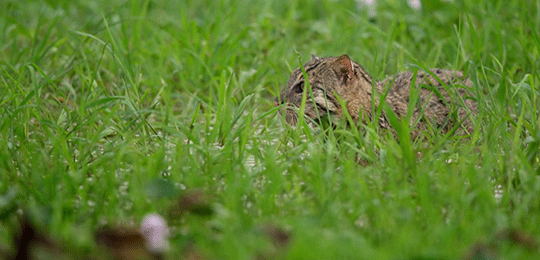



Fishing cats are well adapted to a life aquatic. Beneath their long outer coat they have a shorter layer of insulating fur that acts like a web suit, and they have webbed feet. Their long whiskers detect vibrations from fish moving in the shallows.
BBC Earth
413 notes
·
View notes
Text

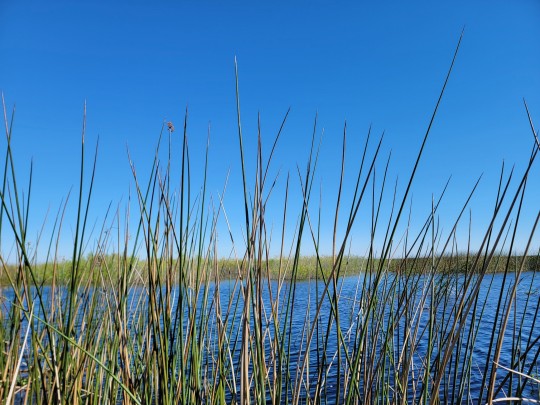
Bulrush on Okeechobee - February 20th 2024
#these are such cool plants to take apart#bulrush#photographers on tumblr#florida#lake Okeechobee#American south#wetlands#these Species are often indicators of healthier low nutrient systems#it makes excellent fish habitat and stable sediment#these are 10ft tall i was standing on the boat#original photography
5 notes
·
View notes
Text
Doing my work but being so brave ab it
#''places where the following are kept'' and it's all like idk wetlands and shit specific words you know#''captive fish'' and i imagine like. those fish farms you know#so i google. aquariums. fucking forgot aquariums existed.
6 notes
·
View notes
Text

Ptychocheilus lucius, Colorado Pikeminnow. Captive. Arizona-Sonora Desert Museum. April 2022.
#fish#wetlands#arizona-sonora desert museum#sonoran desert#photography#my photography#nature photography#april 2022#2022#colorado pikeminnow
2 notes
·
View notes
Text
Muddy Clay Fish
I Am Fish,I Get Dry Without Water,I Cannot Go A Day Without WaterNever Mind A Drop Of Water,Never Mind A Week Without Water,I’ll Feel From My ThroatTo The Deepness Of My VainsTo My Heart Crying To Delute The Same Water With Blood,For The Entire Body To Remain Active Throughout,The Dry Land It IsLike The Ground Broken From Deep DownFish With None Tolerance Of Muddy ClaySand Turning Into DustSoil…

View On WordPress
#Artistry In Poetry#Can A Human Live A Day Without Water#Does Blood Help The Body To Remain Active#Fish Poetry#How Can Human Live Without Water#How Long Fish Stay Out Of Water#How Many Days Can A Being Live Without Water#How To Adapt From Season To Season#How To Await Blessings From Heaven Via Rain#How To Fish#How To Live Impossibilities#How To Live Without Water#How To Recognize Fish In You#How To Resist The Dryness#How To Tolerate Dryness#How Water Delute Blood From Heart#Life Poetry#Muddy Clay Fish#Water Poetry#Wetland To Desert Conversions#Which Fish Cannot Live In Water
2 notes
·
View notes